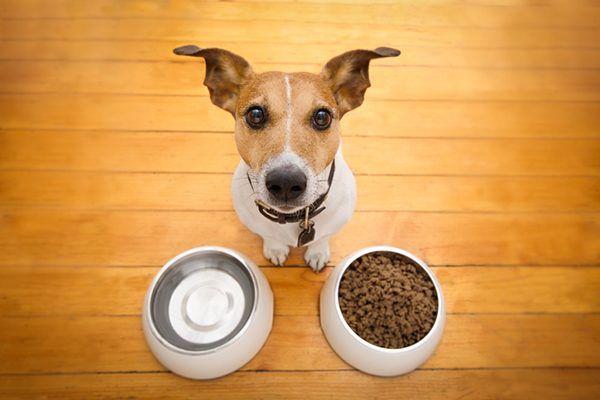KAROO NEWS - Free-feeding a dog means that a dog has access to food all day long, but this is not necessarily good for your dog. Local animal behaviourist George van Huyssteen explains why.
Why free-feeding is bad
There is a lot of controversy around the feeding of dogs - when to feed them, how much to feed them etc. Here are some of the negatives of free-feeding.
By nature, dogs are opportunistic animals. Whenever food is readily available, dogs will nibble on it all day long. So what is wrong with that? The Association for Pet Obesity Prevention found that 52,6% of domestic dogs are obese.
They also found that most owners were unaware that dogs could become obese. As many as 93% of owners did not know how to look for obesity in dogs.
Why obesity is bad for your dog
- Obesity can lead to many illnesses such as early arthritis and joint problems because of the extra weight the dog must carry.
Obese dogs are known to get diabetes type 2. They can also develop heart disease, kidney disease and a variety of cancers. Bloating is another medical issue that kills thousands of dogs each year. The chances of developing these illnesses are higher in obese dogs.
- You lose one of the best training tools you possibly can have.
In modern science-based dog training, trainers use food as a training tool, giving it as a reward for wanted behaviour. If the dog comes when called and a tasty treat reinforces the behaviour, it is far more likely that the dog will come and it becomes a win-win situation.
If the dog had just eaten, he would not be enthusiastic about a treat and will most probably give you a slow response, if any at all.
- Food is a very effective way to correct unwanted behaviours.
In cases where dogs bark when you leave, you can use food as a tool to quiet them down. You can, for instance, put some food in a hollow toy and give it to the dog when you leave. If he knows the toy, he will spend time getting the food out. You can use food to train dogs to come when called or to walk politely on a leash.
This kind of training is not possible with a dog that has access to food all day long. Many pet owners who complain that their dogs don't listen and label them hard to train, stubborn, defiant, and not food-motivated, have unwittingly devalued the dog's food because he has access to it whenever he wants it. It's much easier to ask for behaviour in exchange for his kibble.
Train you dog with fixed meal times
Instead of putting a bowl of food in front of his face, you can use food to train your dog and hand-feed him as a reward. For instance, your dog has to sit before he gets anything. Then you can reward him for sitting, lying down, standing up, spinning around, and the list goes on.
Dogs enjoy this interaction with owners, and owners will find that the dog becomes easier to train in time.
It prevents food aggression / resource guarding
Many dogs that are free-fed develop food aggression. As soon as somebody gets near the dog's food bowl, it will start growling, snarling, and might even bite. Schedule-feeding the dog will let you handle the food bowl regularly, and will, in most cases, prevent food aggression from developing.
Picking up on medical issues
If you feed your dog twice a day, you will immediately notice when it is not eating well or not eating at all. These might be signs of your pet not feeling well. Should it skip three or more meals, it would be good to make an appointment to see a vet.
Dogs with illnesses like biliary fever will lose their appetite very quickly, and with fixed mealtimes, you will soon pick up something wrong with your dog. With free-feeding you will not notice a quick change in eating habits, especially if you have more than one dog.
Conclusion
Once your dog is used to scheduled eating, you can observe how much it is eating. If there is some food left over in its bowl after eating, you are probably feeding it too much. If you see it is eating slowly and still hungry, you can add some more food. You can adjust the food portion until it is just right for your dog.
On most good quality dog food packaging, you will also find feeding information and recommended quantity depending on your dog's size.
The only disadvantage of scheduled eating is that it takes time to prepare meals. But the advantages are so much more and so much more rewarding. If you want to train your dog, take away that permanently full food bowl and start interacting with your dog at feeding time. The human-dog bond will improve as well.
 Train you dog with fixed meal times.
Train you dog with fixed meal times.
'We bring you the latest Graaff-Reinet, Karoo news'
















